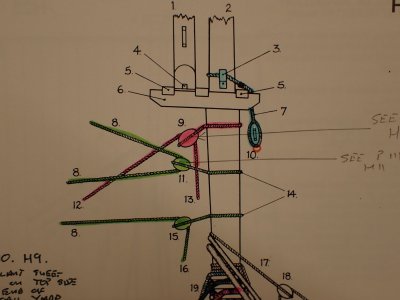- Joined
- Jun 17, 2021
- Messages
- 3,175
- Points
- 588

Liquid hide glue is a slow setting amber colored water-soluble glue that is easily reversable with warm water even after having fully dried yet is very strong when fully dried. Unlike cement (e.g. CA) Glue dries, it does not cure or polymerize, undergoing a structural chemical change. Shellac has this virtue, being reversable with denatured alcohol, as opposed to alkyd resin varnishes.
Hide glue (made from hide scrapings, hooves and connective tissue, basically it is J-ello) is probably the oldest glue known to man. Originally melted into hot water in a glue pot. The liquid kind comes in a typical plastic glue bottle and is available in hardware stores and online under different brand names such as Tite Bond.
It has a shelf life of a few years. The slow set is problematical for us modelmakers in a hurry, but a real virtue for making adjustments before the glue sets up or dries, as well as for its ease of complete reversibility, especially useful when affixing rigging lines to belaying points. Just make sure you leave a long tail to the line before permanently trimming the tail end. Furniture and ship models built with hide glue will stay stably put together for centuries if kept in a stable environment and out of UV light.
Hide glue (made from hide scrapings, hooves and connective tissue, basically it is J-ello) is probably the oldest glue known to man. Originally melted into hot water in a glue pot. The liquid kind comes in a typical plastic glue bottle and is available in hardware stores and online under different brand names such as Tite Bond.
It has a shelf life of a few years. The slow set is problematical for us modelmakers in a hurry, but a real virtue for making adjustments before the glue sets up or dries, as well as for its ease of complete reversibility, especially useful when affixing rigging lines to belaying points. Just make sure you leave a long tail to the line before permanently trimming the tail end. Furniture and ship models built with hide glue will stay stably put together for centuries if kept in a stable environment and out of UV light.
Last edited:






















